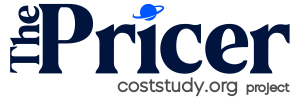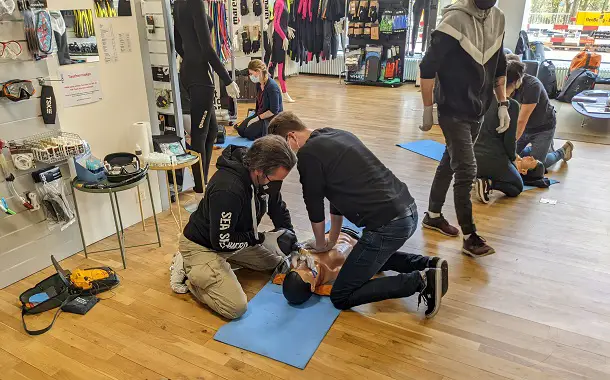How Much Does it Cost to Become a CPR Instructor?
Last Updated on March 12, 2024
Written by CPA Alec Pow | Content Reviewed by ![]() CFA Alexander Popinker
CFA Alexander Popinker
A CPR instructor is trained to teach cardiopulmonary resuscitation (CPR) and basic life support skills to students. As emergencies like sudden cardiac arrest rise, more workplaces and communities want CPR certification. Demand creates opportunity for aspiring instructors.
We’ll break down the costs of becoming an instructor, including prerequisite classes, credential fees, and materials. Understanding expenses will help you budget properly to start teaching. We’ll cover cost factors, savings opportunities, income potential, and beyond financials – the social impact of education. Rates vary, but benchmarks provide initial estimates.
How Much Does it Cost to Become a CPR Instructor?
It will cost around $400 to $1,150 to become a CPR instructor. Prices depend on location, credentialing body, class depth, and so on.
Vitali Partners notes that most CPR instructor courses cost around $1,000 due to the required manuals, lessons, and the teacher’s time. The Heartsaver course and materials cost about $1,150, and the BLS course costs around $1,000.
CPR Training School offers CPR/BLS instructor training at the cost of $350, which includes everything needed to train as an instructor. This cost does not include the materials needed to train students.
ShowMeCPR states that the American Heart Association BLS instructor course costs $375, with additional costs for the online course and instructor manual not included.
Typical credentials pathway components include:
- CPR provider class prerequisite: $75-$150
- Instructor training course: $250-$600
- Credential fees and manuals: $100-$300
- Initial equipment and supplies: $300+
New instructors often recoup costs within several classes. Ongoing expenses include credential renewal, updated guidelines, marketing, and equipment upkeep. We’ll explore these additional factors shortly.
Factors influencing the final bill
Several variables impact CPR instructor credentialing costs, including:
- Location – More populated areas have more options and competition reflected in prices
- Class size – Centers balance higher volume public classes with increased individual attention in private sessions
- Credential scope – Training more broadly through an umbrella organization means more curriculum access
- Class depth – Basic life support focuses on high-quality chest compressions and breaths, while advanced classes add AED, first aid, etc.
- Insurance needs – Some instructor insurance plans help cover liability and give credibility
How to save money when becoming a CPR instructor
Those looking to reduce CPR instructor expenses can:
- Choose group classes for lower per-person rates
- Study comprehensively before skills tests reducing retakes
- Discuss discounts for organizational or multi-class packages
- Buy affordable equipment like home CPR kits to start
- Get certified in basic skills first, then advance later
Additional CPR Training Considerations
Teaching CPR skills makes a meaningful community impact beyond monetary measures. Consider joining nonprofit training programs supporting higher-risk areas.
You might also like our articles about the cost of ski instructor courses, pilot courses, or ACLS certification.
Ongoing costs come also with running an instructor business – marketing, insurance, staying current on guidelines, continuing education, and quality customer service. However, established instructors can earn $50K+ through classes and consulting. Calculate part-time or full-time hours based on your availability and goals.
Final words
Becoming a CPR instructor ranges from $400-$935 including prerequisite CPR skills, credentialed courses, licensing, and starter materials. While an upfront investment, knowledgeable instructors provide a valuable lifesaving service to students. Learn more about equipping and promoting health.
Frequently Asked Questions on First Aid Instructor Courses
Why is there such a range in the cost of becoming a CPR instructor?
 The cost to become a CPR instructor can vary widely due to several factors, including the specific training program chosen, the geographical location of the training center, and the organization providing the certification (such as the American Heart Association or the American Red Cross).
The cost to become a CPR instructor can vary widely due to several factors, including the specific training program chosen, the geographical location of the training center, and the organization providing the certification (such as the American Heart Association or the American Red Cross).
Additionally, different training centers may have varying fees for the instructor course, materials, certification exams, and renewal costs. This variation is why you might see prices ranging from a few hundred to a few thousand dollars.
Can the investment in becoming a CPR instructor be financially beneficial in the long run?
While becoming a CPR instructor requires an upfront investment, it can be financially rewarding in the long term. Instructors can recoup their initial costs by teaching a few CPR courses. The demand for CPR instructor training is consistent, as many professions require CPR certification, and there is often a need for refresher courses.
Additionally, being a CPR instructor can open opportunities for additional income streams, such as offering first aid training, advanced life support courses, or becoming a training center coordinator.


Leave a Reply
Want to join the discussion?Feel free to contribute!